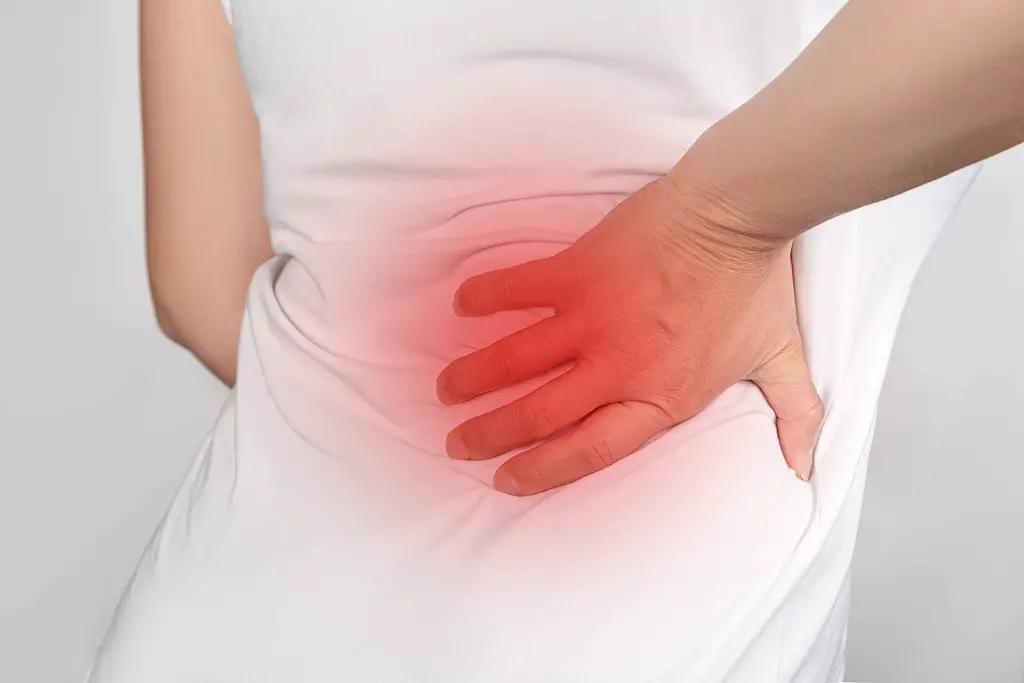Contents
What is Degenerative Disc Disease?
Degenerative disc disease is a common degenerative condition of the spine. It is characterized by the deterioration of one or more discs between the vertebra. The discs act as cushions between the vertebrae, and when they degenerate, they lose their ability to cushion the spine, which can lead to pain.
The condition is most often seen in aging adults, but it can occur at any age. It is more common in men than in women. Treatment for degenerative disc disease generally focuses on relieving pain and improving function. In some cases, surgery may be necessary to remove damaged discs or relieve pressure on the nerves.
How Does Degenerative Disc Disease Cause Pain?
Degenerative disc disease (DDD) is a condition of the spine in which one or more discs between the vertebrae deteriorates or breaks down, leading to pain. When this happens, it’s typically due to degeneration of the outer layers of the disc, which causes the inner layer to leak out. This can lead to inflammation and pressure on the spinal nerve roots, which can cause pain.
The most common symptom of DDD is lower back pain, but it can also cause neck pain and pain in other parts of the body.
Other symptoms include:
- Muscle spasms
- Stiffness
- Abnormal micro-motion instability
- Loss of range of motion
If you have DDD, you may be wondering if an inversion table is a good option for you. Inversion therapy involves hanging upside down for a period of time to decompress the spine and relieve pressure on the discs. This can help to reduce pain and improve the range of motion.
However, it’s important to talk to your doctor before beginning any new therapy, as inversion therapy may not be appropriate for all types of DDD. For example, if your DDD is caused by a herniated disc, inversion therapy could make your condition worse. In addition, people with high blood pressure or glaucoma should not use inversion tables.
If you do decide to try inversion therapy, be sure to use a quality table that is designed for people with degenerative disc disease. Start slowly and increase the amount of time you spend upside down gradually.

What Are the Symptoms of Degenerative Disc Disease?
Degenerative disc disease is characterized by the breakdown of one or more lumbar discs. As we age, our discs naturally degenerate or break down. This process is called disc degeneration. For some people, this process happens faster than for others and can cause pain.
Degenerative disc disease can cause pain in the lower back and neck, as well as muscle spasms. The pain is often a low-grade pain level, but it can flare up at times. Depending on the severity of the disease, the pain may go away on its own or may require treatment.
Additional pressure on the discs can make the pain worse. When degenerative disc disease progresses, the discs may become thinner and compress more easily. This additional pressure can cause more pain and may make it difficult to move normally.
Any Possible Solutions?
When it comes to degenerative disc disease, there are a number of potential solutions that may be recommended by your doctor. These can range from conservative treatments such as physical therapy or pain medication to more invasive options such as spinal fusion surgery. In some cases, your doctor may even recommend inversion therapy as a possible solution.
So, what is inversion therapy? And more importantly, is it effective for treating degenerative disc disease?
Inversion therapy is a type of gravitational spinal decompression that involves hanging upside down from an inversion table or similar device. The theory behind inversion therapy is that by reversing the effects of gravity, you can take pressure off of the discs in your spine and allow them to heal.
There is some evidence to support the use of inversion therapy for treating back pain. However, there is little scientific evidence to show that inversion therapy is effective for treating degenerative disc disease specifically. In addition, there are a number of risks associated with inversion therapy, such as dizziness, nausea, and eye pressure. As such, it should not be used as a primary treatment for degenerative disc disease.
If you are looking for potential solutions for your degenerative disc disease, your best bet is to discuss all of your options with your doctor. While inversion therapy may offer some relief from your symptoms, there are a number of other potential treatments that may be more effective for you.
Inversion Therapy and Inverted Decompression As a Natural, Non-Invasive Solution
Degenerative Disc Disease (DDD) is a condition where the discs in your spine begin to break down and collapse due to wear and tear. This can lead to a number of problems, including chronic pain, stiffness, and reduced mobility.
Inversion therapy is a treatment that involves hanging upside down or at an inverted angle for a period of time. This is said to help relieve pressure on the discs in your spine and improve blood flow to the area.
A recent study found that inversion therapy may be an effective treatment for degenerative disc disease. The study looked at a group of patients with DDD who were prescribed decompression therapy. This is a type of therapy that involves hanging upside down or at an inverted angle for short periods of time each day.
The results showed that the patients who underwent inversion therapy had significant improvements in their symptoms, including pain relief, increased mobility, and improved quality of life. These findings have strong clinical implications and suggest that inversion therapy may be an effective treatment for degenerative disc disease.
Frequently Asked Questions
Would an inversion table help degenerative disc disease?
There is no definitive answer, as each individual's situation is different. Inversion therapy may help to temporarily relieve pain and improve mobility for some people with degenerative disc disease, but it is not a cure.
What are the health benefits of hanging upside down?
There are many health benefits associated with hanging upside down, including improved circulation, reduced stress, and improved digestion. Additionally, hanging upside down can help to improve balance and coordination.
Is inversion good for your heart?
There is no definitive answer to this question as the effects of inversion on heart health are not well-known. Some people believe that inversion can improve heart health by increasing blood flow and improving circulation, while others believe that it could be harmful due to the increased pressure on the heart.
inversion tables, inversion table, inversion therapy, back pain, inversion table therapy, gravitational force, medical professional, slipped discs, blood pressure, spinal discs, health benefits, heart rate, spinal traction, back pain relief, drug administration, key points, necessary precaution, following health issues, sciatic nerve pain, muscle, spasms, spinal curvature, stenosis, degenerative disc, degenerative joint disease, spinal disks, medical devices, chiropractors, inversion tables, inversion treatment, pain, method, negative side effects, upside down, modern medicine, chronic back pain, disc herniations, chiropractic adjustments, slipped disc, degenerative disc disease, bulging disc, lower back, spinal discs, ruptured disc, lower back pain, herniated, sciatica, lordosis, herniated disk, chiropractors, chiropractic, the curvature of the spine, traction, back pain
Conclusion
There is no one-size-fits-all answer to this question, as the effectiveness of inversion tables for degenerative disc disease will vary depending on the individual’s condition. However, many users of Teeter inversion tables report significant pain relief from multiple conditions, including degenerative disc disease and sciatica.
In general, users report feeling more comfortable and less pain after using a Teeter inversion table. Additionally, Teeter is a well-respected and trusted brand in the inversion table industry, with satisfied users all over the world.
While there is no guarantee that an inversion table will relieve all pain associated with degenerative disc disease, it may be worth considering as a potential treatment option.

Dave Lee is the founder of Spine Institute NY, a huge fan of inversion therapy, a researcher, and an author.

